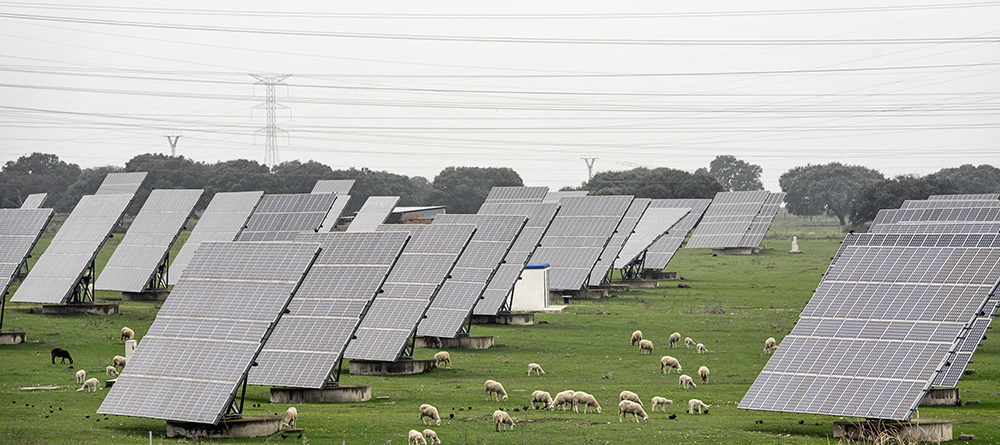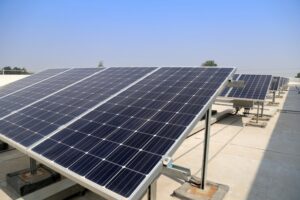Introduction
The Philippines, known for its expansive archipelago, year-round sunlight, and hardworking people, is well equipped to harness solar energy on an international scale while reducing its reliance on fossil fuels and tapping into the abundant natural resources that the country is gifted with.
Large solar power projects or Utility-scale solar projects are designed to supply clean electricity directly into the grid while transforming the way communities, industries, and cities access power. The Philippine government has recognized the enormous potential of utility-scale solar, implementing a series of supportive policies and financial incentives to encourage both local and international investments.
For utility-scale solar developers, the Philippines offers a landscape ripe with opportunity and robust government backing, making it one of the most promising regions for solar energy expansion. By apprehending how the government supports financing, design, and project management for utility-scale solar projects, it would be vivid to potential investors why this sector is on the rise in the Philippines.
Understanding Utility-Scale Solar: Why It Matters for the Philippines
Utility-scale solar projects refer to large-scale energy projects that produce enough power to supply to the grid, making them a key player in reducing the country’s dependence on fossil fuels. These expansive solar fields, unlike residential systems, are built to generate massive amounts of electricity that are essential to powering communities, cities, and industries.
As the Philippines pursues ambitious renewable energy goals, utility-scale solar offers an effective strategy to increase clean energy production while stabilizing costs.
Government Incentives for Utility-Scale Solar Companies
Philippine authorities have implemented incentives designed to entice utility-scale solar companies, making investing in renewable energy more appealing.
Renewable Energy Act of 2008
Implemented on 15th November, the Renewable Energy Act of 2008 plays an important role in supporting the growth of solar energy in the Philippines. This law aims to accelerate the development and utilization of renewable energy sources in the country, including solar power.
Key elements of the Act
- Feed-In-Tariffs (FIT)
This law introduced a Feed-In Tariff (FIT) system, guaranteeing renewable energy producers fixed payments for electricity they generate and sell back into the grid. This provides stable income to solar investors – an attractive prospect both for businesses and individuals alike.
- Tax Incentives
The law offers several tax incentives for renewable energy projects such as solar. These incentives include income tax holidays, duty-free importation of renewable energy equipment, and reduced corporate tax rates.
- Green Energy Option Program (GEOP)
As part of its mandate, the Renewable Energy Act created the Green Energy Option Program (GEOP), enabling consumers to choose renewable sources of electricity for their daily electricity requirements and support renewable energy development by selecting greener alternatives.
Innovative Initiatives Empowering Solar Growth in the Philippines
In addition to grants and loans, several innovative options and methods for solar projects are gaining popularity among investors. Here are a few of them that have eased the way to a green revolution in the Philippines.
- Green Bonds: Companies can issue green bonds, raising capital specifically for clean energy projects like utility-scale solar. These bonds are often backed by government guarantees, making them attractive to investors.
- Public-Private Partnerships (PPP): The government is increasingly open to PPPs, where private utility-scale solar companies collaborate with public entities to share resources, technology, and risks.
- Foreign Investment: The Philippines has also opened its doors to foreign investors who can now own 100% of energy development companies by relaxing restrictions on foreign ownership of renewable energy projects. This attracts a diverse array of global investors interested in utility-scale solar project financing.
Streamlined Project Management for Utility-Scale Solar
Managing utility-scale solar projects effectively is vital to meeting deadlines while staying within the estimated budget. With these project management supports in place, utility-scale solar companies can confidently enter the Philippine market, knowing that bureaucratic obstacles have been reduced significantly.
- One-Stop Shop Service: Agencies like the DOE offer “one-stop-shop” services, such as the Energy Virtual One-Stop Shop (EVOSS), a web-based platform that centralizes filing, tracking, and information storage for energy projects. EVOSS enhances transparency, unites agencies for efficient collaboration, and simplifies approvals, helping utility-scale solar developers secure permits faster and complete projects on schedule.
- Training and Development: The government offers capacity-building programs designed to train locals on project management, design, and engineering for utility-scale solar installations. Through such efforts, a skilled workforce has been developed that is capable of meeting the specific challenges associated with large-scale installations.
- Increased Monitoring and Compliance: To make compliance simpler and more transparent, the Energy Regulatory Commission has also strengthened monitoring procedures for utility-scale solar projects, making monitoring easier and compliance transparent.
The Future of Utility-Scale Solar in the Philippines
The Philippines stands on the brink of a renewable energy revolution, with utility-scale solar leading the way. As abundant sunlight, rising clean energy demands, and robust government support continue to transform the energy landscape quickly, it has become an attractive hub for investors and innovators.
Imagine a horizon where vast solar farms stretch across the islands while powering cities, businesses, and homes with the sun’s endless energy. This vision isn’t a far-off dream; in fact, it is on the verge of becoming reality with the determined support from the government and the innovative financing options available. From long-term leases on government land to performance-based incentives, the government is serious about making large-scale solar development a national priority.
Walking towards a carbon-free tomorrow, the Philippines steps closer to a future where clean energy isn’t just an ideal but an accessible, everyday reality. So, for those ready to play a role in a groundbreaking renewable energy market, the future of utility-scale solar in the Philippines is wide open and packed with potential.
Conclusion
Utility-scale solar companies find the Philippines market irresistible as, here, investors see an unrivaled combination of favorable conditions, an energetic government, sun-kissed landscapes, and a fast-rising demand for clean energy.
By investing in the Philippines, utility-scale solar companies gain access to an emerging powerhouse of renewable energy that is accelerating energy independence and environmental resilience on an unparalleled scale. Every new solar project takes the Philippines one step closer to realizing its vision of a cleaner and greener tomorrow.
You can learn more about Utility-scale solar projects and their implementation challenges from our website. At Nativ Techniks, we recognize the transformative potential of solar, which is why we take great pride in providing our customers with top-quality panels and equipment to facilitate their efforts toward creating a more sustainable, greener and healthier future.
Contact us now by dialing +639176310032 or write to us at wecare@nativtechniks.com
Also read our other blogs
Flexible Solar Panels: The Future of Portable & Efficient Solar Power Solutions
The Best Solar Panel Types for Industrial Use: A Comprehensive Comparison
How Businesses in the Philippines Can Gain Competitive Edge with Solar Power ?




Leave a Reply